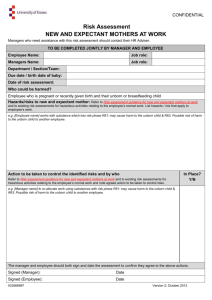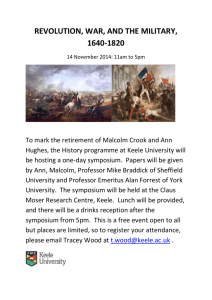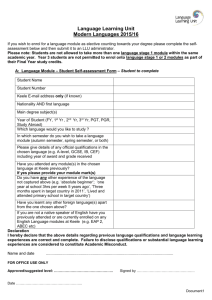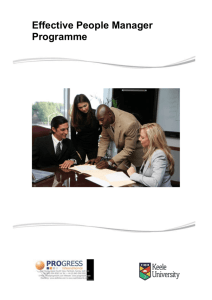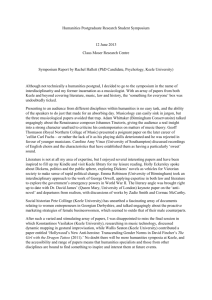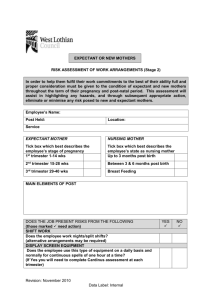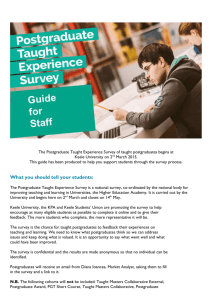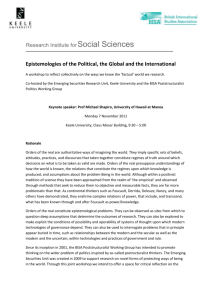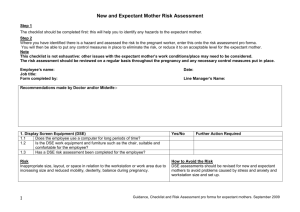Pregnancy Risk Assessment Form
advertisement
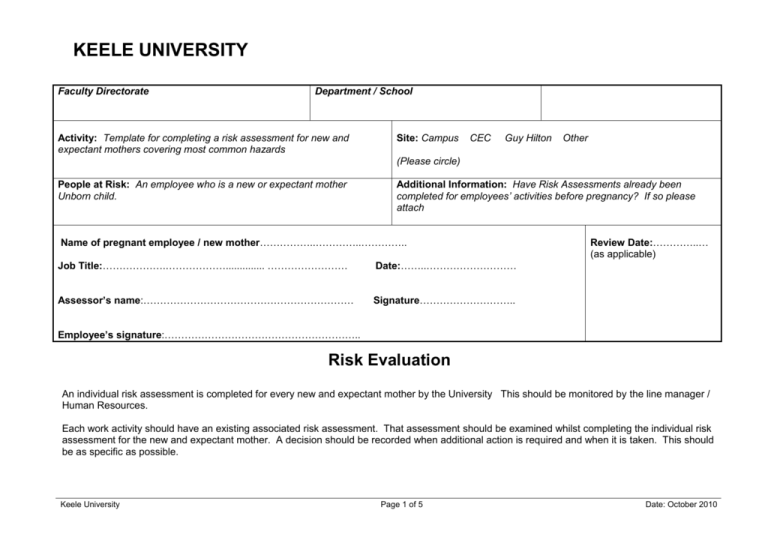
KEELE UNIVERSITY Faculty Directorate Department / School Activity: Template for completing a risk assessment for new and expectant mothers covering most common hazards Site: Campus CEC Guy Hilton Other (Please circle) People at Risk: An employee who is a new or expectant mother Unborn child. Additional Information: Have Risk Assessments already been completed for employees’ activities before pregnancy? If so please attach Name of pregnant employee / new mother……………..…………..………….. Job Title:……………….……………….............. …………………… Date:……..……………………… Assessor’s name:……………………………………………………… Signature……………………….. Review Date:…………..… (as applicable) Employee’s signature:………………………………………………….. Risk Evaluation An individual risk assessment is completed for every new and expectant mother by the University This should be monitored by the line manager / Human Resources. Each work activity should have an existing associated risk assessment. That assessment should be examined whilst completing the individual risk assessment for the new and expectant mother. A decision should be recorded when additional action is required and when it is taken. This should be as specific as possible. Keele University Page 1 of 5 Date: October 2010 KEELE UNIVERSITY The assessment should be regularly reviewed by the manager during the pregnancy and will need a complete review once the staff member is a new mother. The staff member should report any difficulties in either complying with the assessment or completing work between these reviews. If there is any difficulty in reaching agreement on appropriate control measures the Department of Occupational Health and Safety should be consulted as soon as any issues arise. A copy of the individual assessment should be given to every new and expectant mother in employment. Health & Safety Executive guidance regarding the safety aspects of working as a new or expectant mother can be obtained from the HSE website or via the Department of Occupational Health and Safety. Hazard Risk Initial Rating Control Measures and Guidance (L, M, H,) Low Medium High Final Rating (L, M, H,) Additional Action Required (action by whom and completion date) or not applicable General Conditions e.g. Noise Extremes of hot and cold Shock, vibration or movement Moving and manual handling of equipment or materials. Miscarriage, foetal lesions and placental displacement General ergonomics Miscarriage Keele University Increased susceptibility to injury. Each activity should be listed in the individuals risk assessment. If there is a significant risk from the activity, action should be taken. The control measures to be adopted for each activity during this period should be listed individually as appropriate. Heavy lifting should be avoided. Ensure comfortable seating. Page 2 of 5 Date: October 2010 KEELE UNIVERSITY Hazard Risk Initial Rating Control Measures and Guidance (L, M, H,) Low Medium High Final Rating (L, M, H,) Additional Action Required (action by whom and completion date) or not applicable Over-tiredness or pain due to long periods of standing. Development of varicose veins. Miscarriage. A rest facility should be provided for the employee to lie down if they so wish. Ideally, this should be a bed, located in a quiet, private, secure area, although this is not always practical. The minimum control would be the availability of a reclining chair with the ability to raise the legs. Impairment of dexterity, agility coordination, speed of movement reach, balance. Excessive mental pressure. Keele University Increased risk of accidents. Fatigue. Stress and high blood pressure. Any modification required will have to be detailed. These may include modifications to work stations the need for longer rest breaks or avoidance of other tasks, details of which should also be recorded. Particular attention to be paid to tidiness & storage. Hours of work and work loads should be examined on an individual basis. An individual may be less able to cope in these circumstances although this should not be assumed. Page 3 of 5 Date: October 2010 KEELE UNIVERSITY Hazard Risk Initial Rating Control Measures and Guidance (L, M, H,) Low Medium High Final Rating (L, M, H,) Additional Action Required (action by whom and completion date) or not applicable Use of chemicals / Drugs. Damage to unborn foetus. Where chemicals are used these should be assessed. Any mention of concentrations being harmful to women of child bearing age or expectant mothers should be immediately referred to DOHS and their use prohibited until cleared for use. Aspects of pregnancy which may affect work. Morning sickness, backache, varicose veins, haemorrhoids frequent visits to the toilet, size, tiredness. Possible effects on both mother and unborn child Effects will have to be assessed on an individual ongoing basis in relation to work activities Possible effects on both mother and unborn child. It is particularly important that the precautions that are already required to reduce risks of cross infection are strictly adhered to by the expectant mother. Chemical exposure to known materials with a workplace exposure limit Infection Risks due to routine work activities such as handling body fluids Hepatitis A Hepatitis B, C, D HIV. Keele University Ensure COSHH assessments have been carried out. The infection risks that the expectant mother is exposed to must be reinforced in the individual’s risk assessment. . Page 4 of 5 Date: October 2010 KEELE UNIVERSITY Hazard Risk Initial Rating Control Measures and Guidance (L, M, H,) Low Medium High Final Rating (L, M, H,) Additional Action Required (action by whom and completion date) or not applicable Animal diseases plus diseases arising from contact with soil. Transmission to baby giving rise to serious consequences. Infection risks due to illness within the community Human parvovirus B19 Rubella virus* Chickenpox* Other biological agents, cytotoxic drugs Radiation Expectant mother contracting disease and passing it to unborn baby. When mother returns to work, failure to identify the control measures which may still need to apply. Keele University The activities below should not be carried out: handling animals Estates gardening activities If staff have not been immunised, advise immunisation* Non-immunised pregnant employees are advised not to be in contact with known cases. *where appropriate via GP. Possible effects on both mother and unborn child. Mental stress and Injuries arising from moving and handling Take advice from the University’s Radiation Protection Advisor or locally the Radiation Protection Supervisor The provisions of the expectant mother’s risk assessment should be revisited when a new mother returns to work. If required, facilities should be arranged for expressing milk in private (not in the toilet!) and storage of it afterwards in a fridge. Page 5 of 5 Date: October 2010
